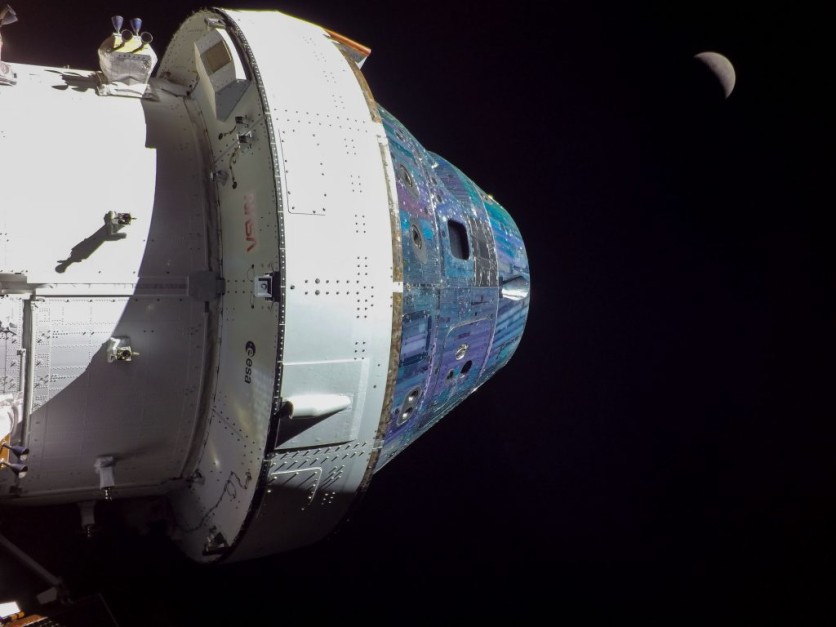Artemis 1's Orion capsule has successfully completed a burn to insert itself into a far-off retrograde orbit from the Moon. The orbital maneuvering system engine was fired for one minute and 18 seconds at 4:52 p.m. CST and was traveling at a speed of 363 feet per second, according to NASA's latest update.
Orion reached its furthest distance from the Moon throughout the mission just before performing the burn, reaching more than 57,000 miles above the lunar surface.
NASA added that light controllers would monitor important systems and conduct checkouts while in lunar orbit due to the harsh conditions of deep space.

40,000 Miles Above the Moon
Orion will sail around 40,000 miles above the Moon since the orbit is considerably distant. The capsule will need over a week to complete half of its orbit around the Moon before leaving its path to head back to Earth.
The spacecraft will use the Moon's gravitational pull once more in four days, together with a precisely planned lunar flyby burn, to launch Orion onto its return trajectory to Earth for its splashdown on Sunday, Dec. 11.
On Nov. 26, the Orion will surpass the previous record for the greatest distance covered by a spacecraft intended to carry people into space and return them safely to Earth.
The Apollo 13 spacecraft recently held the record at 400,171 kilometers (248,655 miles) away from Earth. Orion was created especially for missions that will send people farther into space than ever before.
Engineers are testing several Orion spacecraft components on Artemis I, such as its highly capable propulsion system, to keep its trajectory precise and guarantee that its crew can return home.
NASA noted that a spacecraft must have systems that can consistently function far from Earth, be able to keep humans alive in case of crises, and still be light enough to be launched by a rocket.
The equipment needed for astronauts to survive and breathe in outer space will be put to the test by Artemis II. Engineers must create compact systems for long-term trips far from Earth to carry enough food and water for the duration of the voyage as well as to maximize the amount of space available for crew comfort.
When Will NASA Send Humans to the Moon?
A touchdown won't occur until NASA astronauts attempt a lunar landing with SpaceX's Starship in 2025 because Orion doesn't have a lunar lander.
The first astronaut mission will take place in 2024 on Artemis 2, piloting a crewed Orion around the Moon.
Creating a crewed base close to the Moon's south pole is one of NASA's main objectives for the Artemis mission. Astronauts on board Artemis 3 will launch and touch down on the Moon's surface a year or two later.
The project has cost more than $40 billion since it began in 2017. NASA will prioritize human space exploration and maintain a permanent presence, thereby constructing a space station and a base camp on the Moon.
Related Article : NASA Unexpectedly Loses Contact with Artemis 1's Orion Capsule for Over 40 Minutes
This article is owned by Tech Times
Written by Jace Dela Cruz
ⓒ 2025 TECHTIMES.com All rights reserved. Do not reproduce without permission.




